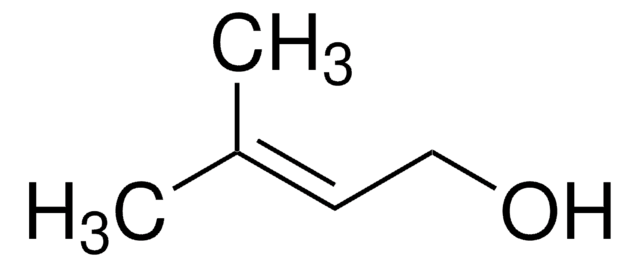M32658
3-Methyl-1-butanol
reagent grade, 98%
Synonym(s):
Isoamyl alcohol, Isopentyl alcohol
About This Item
Recommended Products
grade
reagent grade
Quality Level
vapor density
3 (vs air)
vapor pressure
2 mmHg ( 20 °C)
Assay
98%
form
liquid
autoignition temp.
644 °F
expl. lim.
1.2-9 %, 100 °F
refractive index
n20/D 1.406 (lit.)
pH
5.6 (20 °C, 25 g/L)
bp
130 °C (lit.)
mp
−117 °C (lit.)
density
0.809 g/mL at 25 °C (lit.)
SMILES string
CC(C)CCO
InChI
1S/C5H12O/c1-5(2)3-4-6/h5-6H,3-4H2,1-2H3
InChI key
PHTQWCKDNZKARW-UHFFFAOYSA-N
Looking for similar products? Visit Product Comparison Guide
Related Categories
Application
Biochem/physiol Actions
Signal Word
Danger
Hazard Statements
Precautionary Statements
Hazard Classifications
Acute Tox. 4 Inhalation - Eye Dam. 1 - Flam. Liq. 3 - Skin Irrit. 2 - STOT SE 3
Target Organs
Respiratory system
Storage Class Code
3 - Flammable liquids
WGK
WGK 1
Flash Point(F)
110.3 °F - closed cup
Flash Point(C)
43.5 °C - closed cup
Certificates of Analysis (COA)
Search for Certificates of Analysis (COA) by entering the products Lot/Batch Number. Lot and Batch Numbers can be found on a product’s label following the words ‘Lot’ or ‘Batch’.
Already Own This Product?
Find documentation for the products that you have recently purchased in the Document Library.
Customers Also Viewed
Our team of scientists has experience in all areas of research including Life Science, Material Science, Chemical Synthesis, Chromatography, Analytical and many others.
Contact Technical Service








